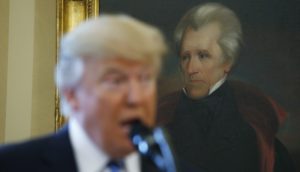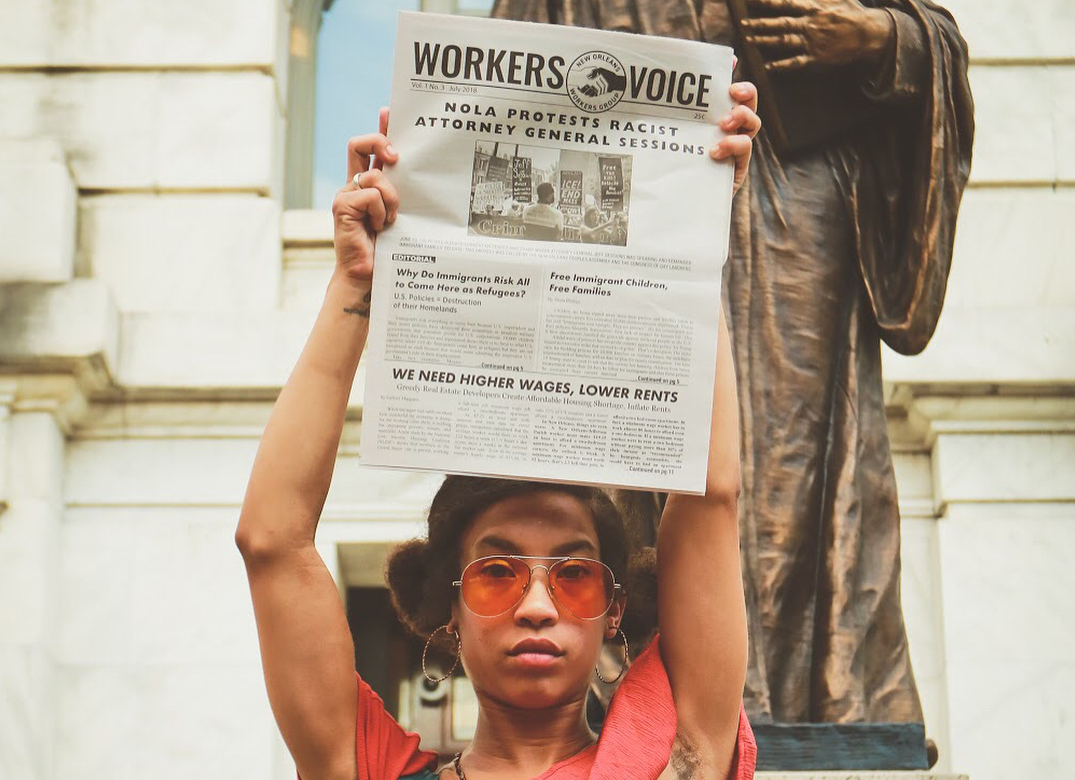
On March 15, 2017, Trump laid a wreath on an Andrew Jackson monument in Nashville, giving a ten-minute speech in which he declared himself a “big fan“ of Jackson. Previously, he had hung a portrait of Jackson, his “hero“, in the Oval Office.
Ten Reasons to Tear Down the Jackson Statue:
1. Using his position as a colonel in the Tennessee militia, Jackson seized land by force from poor farmers to benefit slave holding plantation owners. He personally acquired over 640 acres and set up the Hermitage Plantation and owned over 300 slaves.
2. Jackson acquired land reserved for Cherokee and Chickasaw, in violation of law, to found Memphis Tennessee.
3. Jackson whipped slaves and sent troops out to capture runaway slaves.
4. To acquire more land for slave owners, Jackson stole land from Indian nations across the Southeast. As President, Jackson enacted the Indian Removal Act of 1830. Although the Supreme Court ruled against this policy, Jackson defied the court and ordered the removal.
5. Jackson represented the slave states that voted to enact the removal policy. The southern state governments destroyed Indigenous governments, banned assemblies, denied Indians the right to sue or testify in court, or dig gold on their own land.
6. Jackson drove 17,000 Cherokees from their farms and force-marched them to Oklahoma in winter, which came to be known as the Trail of Tears.
7. Jackson’s Trail of Tears caused the death of 8,000 Cherokee and Chickasaw and 4,000 Choctaws. They died from brutality, hunger, exposure, and disease in prison camps.
8. In 1816 Jackson ordered the horrific massacre of 330 free Blacks, men women and children at “Fort Negro” in Florida. This was a thriving farming/herding community of free Blacks. Jackson wrote “it ought to be blown up…destroy it and return the stolen negroes to their owners.”
9. While in the military, Jackson invaded Florida in 1818. He carried out wars against the Seminole, Creek and Muscogee Indians. Jackson’s purpose was to acquire Florida for slave owners and prevent runaway slaves from joining the Seminoles. Jackson burned the homes and crops of the Seminole and others.
10. Jackson was opposed to treaties calling them “an absurdity” and said, “the government should simply impose its will on them.”
